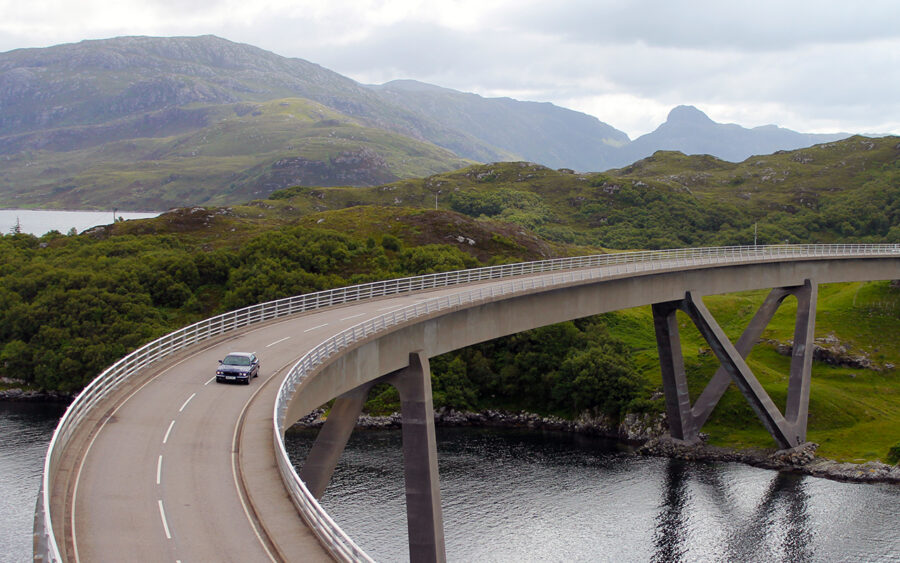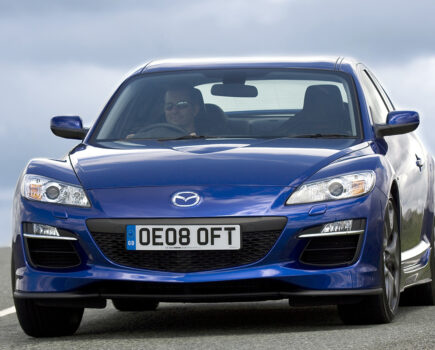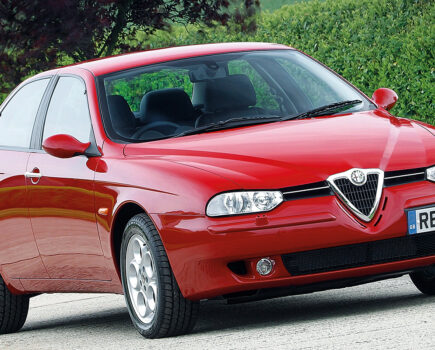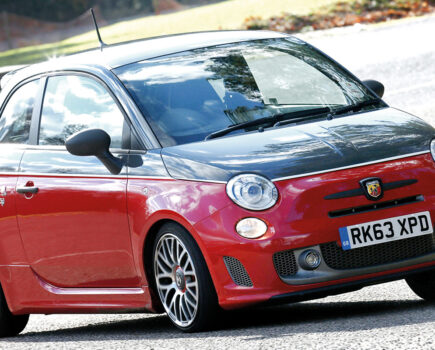We may not have the Stelvio Pass on our doorstep, but with a bit of thought and the right car, Britain can throw up some memorable drives. We pick our favourites
Sponsored editorial in association with Footman James
Words: Paul Wager Images: Paul Wager, Paul Walton, Jeff Ruggles, Joe Miller, Aaron McKay, Alice Stanley
South Wales
History may only have given us one Welsh car maker (or two depending where you stand on Aston Martin) but the country has motorsport form in the shape of its forest stages where the reputations of the world’s rally winners were forged.
Clearly though, unless you’re sideways in a 70s Escort, then the public roads rather than the gravel tracks are your playground and our preference is to head further south. North Wales has its charms of course, but when we needed a venue recently to film a selection of 90s Japanese performance cars, we headed straight for the Black Mountains. The M4 isn’t everyone’s favourite motorway, but once you’re past the twin bottlenecks of Almondsbury and the dreaded Newport tunnels it does deliver you to Swansea efficiently.
Come off at junction 45, take the A4067 as far as Pontardawe where you turn off onto the A474 and start to climb away from the many towns and villages dotting the landscape, until you reach Gwaun-Cae-Gurwen, where you take the A4069 to Brynamman.
As the road curls up out of Upper Brynamman, the sheep finally outnumber the cars and the sky opens up to a spectacular vista of open countryside. There’s a speed limit on much of this part of the road, but as you head further into the mountains, the twists and turns mean it’s not much of an impediment to having fun behind the wheel.

On a good day you’ll find car makers filming promotional material here, and Aston Martin was present last time we visited. They won’t be up for a race, but challenge the local lads at your peril… one which caught our eye was an expertly piloted Audi A3 diesel, standard save for a tell-tale soot cloud under acceleration and a massive pair of spot lamps on the nose. Even in a Mitsubishi Evo we struggled to keep up…
It’s after the Mountain Road Car Park that the road itself starts to get more interesting, with a downhill hairpin signalling the start of a more twisty section, with the road eventually levelling out by the time you reach Llangadog.
From here you have two choices for heading back to Swansea: either retrace your steps along Mountain Road, or head north on the A40 through Llandovery to Trecastle. Here you can take a right on to Chapel Street which takes you on a winding single-track route across the other side of the mountain, passing Usk Reservoir. The road isn’t as open but the scenery is still superb; and although the tarmac is narrow, it’s a sweeping route without speed limits but with plenty of sheep.
If you’ve more time to spare, take the A40 as far as Sennybridge before turning off on to the A4067, which will take you all the way back to the coast but does get rather urban towards the southern end.
Back in Swansea, as the car ticks and cools, there’s a whole city’s worth of diversions but our choice would be to head round the coast to the Mumbles, where the beaches of Caswell and Langland offer a great way to finish off the day.
North Yorkshire
The North York Moors National Park covers a whopping 554 square miles, but the sightseeing can start en route with a trip to The Motorist, near Sherburn in Elmet. This petrolhead venue combines a classic car garage and showroom with motoring events and a café open seven days a week.
From here, pick up the B1222 towards York and skirt the Howardian Hills on the A64 bound for Malton, deviating for a run past the 18th century Castle Howard stately home. From here head north on the A169 towards Pickering. But before that, there’s a second petrolhead destination to check out. NY500 is a café and motoring event venue just off the main road, and because it opens from 8.30am, is perfect for a spot of breakfast as well as a perusal of the cars (and Raleigh Choppers) on site.
A bustling market town set at the edge of the National Park, Pickering is famous for tourist attractions like the North Yorkshire Moors Railway and its medieval castle, but arguably more so for being the location of the Mathewsons concern of Bangers and Cash fame. However, for the full experience, make the short hop east to Thornton-le-Dale, which features the original Mathewsons building with its memorabilia and merchandise. There’s also an ice cream parlour and a chocolate shop, where you can buy an edible Porsche 911, should the mood take you.

Pickering is the gateway to the Moors, with their stunning mix of clear driving roads and breathtaking views (if you can take your eyes off the tarmac). For our last visit, we based ourselves at Rosedale Abbey, heading north along Knot Road before bearing south along Blakey Ridge with a stop at the cosy Lion Inn. To complete the loop, the return includes a drive down the Rosedale Chimney Bank, which shares the title of steepest road in England thanks to a 1-in-3 gradient.
The A169 as it continues between Pickering and the seaside resort of Whitby is another cracker, with a combination of long straights and bends to give your car’s handling a workout. The possibilities of the area are endless and there’s the potential for a trip west to explore the stunning Yorkshire Dales. For the most part you’ll be a stone’s throw from great driving roads, amazing views, historical sights and just enough petrolhead destinations to keep you happy.
Scotland
The go-to car enthusiast’s Scottish pilgrimage is, of course, the NC500 – a prescribed 500-mile route that takes in some of the wildest scenery of the Highlands (including the Kylesku Bridge, main image). If you’ve thought about taking it on, we reckon it’s worth going the long way there to include what is probably a more exciting stretch of tarmac. You could also simply avoid the NC500 altogether and head off on your own NE500 instead.
Heading north from Edinburgh (perhaps stay a few days before you set off), follow the M90 over the Queensferry Crossing and onwards to Perth. From here, the A9 is the fast-track to the start of the NC500, but there’s a more exciting option. Join the A93 instead and you’ll start to climb into the mountains on a great stretch; you’ll reach the first of two ski centres on the journey – Glenshee – surprisingly quickly if you’re having fun behind the wheel. It’s a good place to stop to use the facilities and grab a coffee, as well as taking in some of the absurdly fresh air if your chosen vehicle doesn’t already allow.
Well-sighted, flowing roads feature on the downhill stretch between Glenshee and Braemar. You don’t need a lot of power to have fun here; good brakes are far more important. Top up on fuel on the way out of Braemar if you need it, then head towards Balmoral. You can’t stop on the road to take pictures (strongly worded signs will remind you of this), so instead focus on trying to catch a glimpse of the castle through the trees.
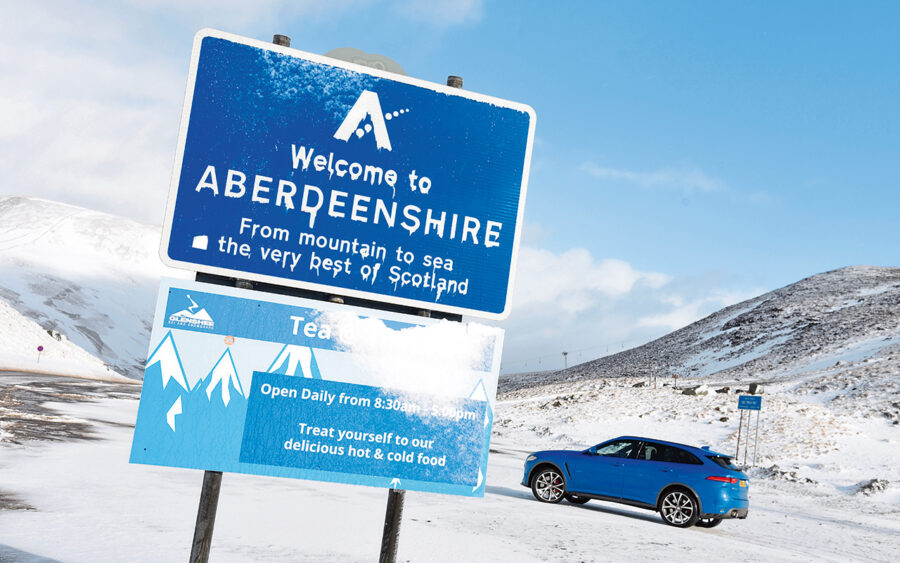
From here, there are a few options, but we’re going to assume you’re looking for the best driving experience. With that in mind, take a left at Crathie onto the B976; you’ll soon cross the picturesque Gairnshiel Bridge, then join the A939.
There’s a decision to make on destination once you meet a junction. The A939 turns left; it’s hard to miss the bright white Corgarff Castle as you climb steeply via the Lecht Ski Centre to Tomintoul. Whisky lovers are advised to look at the map here and select from a vast array of world-famous distilleries, many of which run fascinating tours – although the driver will have to forgo the customary free samples. This is also the direction you’d head in if you wanted to pick up the NC500 route.
If you’d rather stick to the automotive theme, it’s worth turning right at the aforementioned junction and setting course to the Grampian Transport Museum in Alford via the A944 and
A97. It’s a picturesque yet fast-flowing route, offering pleasing views as it traces the River Don for much of the way.
The museum itself is a treasure trove of historic vehicles of all kinds, while the adjoining track and grandstand are used for a number of live events and car shows. The museum opens for the season on April 1, with its ‘How Many Left?’ car show taking place every May.
Peak District
A favourite of bikers, both petrol and pedal-powered, the area generally known as the Peak District forms the southern end of the Pennines and is within an hour of some big conurbations including Sheffield and Manchester, but at the right time of year the roads are still empty enough for a fun drive.
Coming from the south, Matlock is a good starting point, with Matlock Bath generally thronged with bikers. From here take the A6 towards Buxton, passing through Bakewell where seemingly every other shop claims to be the original home of the eponymous tart.
From Buxton, the A54 climbs out of the town, with the right-fork on to the A537 taking you up to the infamous Cat and Fiddle pub where it’s worth taking a break and drinking in the views if the fog permits.

The A537 ultimately takes you Macclesfield, but before entering the town, double back to divert north on the B5470 towards Whaley Bridge and from here taking the A624 to Glossop.
From here, head East on the A57 which will take you across the infamous Snake Pass, its summit at 1687 feet. At the foot of the descent on the Eastern side, you’ll find the Ladybower Reservoir, with the buildings of the flooded Derwent village still visible during a hot summer.
As you cross the reservoir, head south towards the A6187, turning south on to the B6001 in Hathersage before picking up the A623 and heading south past Chatsworth House following the River Derwent on the B6012. As you head into Darley Dale, the A6 takes you back to the start after a neat 100-mile trip at which point you’ll be glad to join the bikers in Matlock Bath for a cold pint.
Isle of Man
Just 31 miles by 13, the tiny island in the Irish Sea has a motorsport reputation far outweighing its diminutive size, thanks largely to the annual TT motorbike races.
You don’t need a rocket bike and helmet to enjoy the challenging roads on the island though, as we discovered recently when we visited in a Jaguar XKR.
Of all the roads which make up the TT course, the Snaefell Mountain Road is a favourite, forming part of the Mountain Course used in the TT races, which sees riders starting from Douglas, taking the A1 to the west of the island before taking the A3 north back to Ramsey at which point our 13-mile section takes competitors back to the finish line at Douglas.
Outside the towns and villages, the island has no national speed limit, which might sound appealing, but make sure your skills are up to the challenging terrain: we managed to cook the big Brembos on our XKR only too easily.
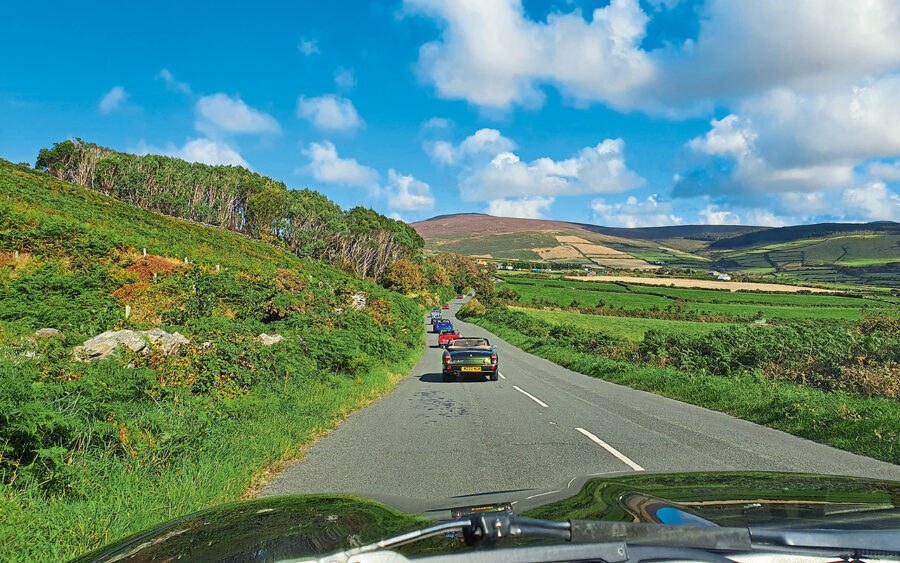
South West
Ask someone to picture a typical drive in the South West and the idea of gently wafting between sleepy villages will probably spring to mind. It doesn’t have to be cream teas and cider though: away from the tourist-clogged hotspots, the rugged coastal terrain has much to offer.
For most of the UK, it’s the M5 which delivers you to the toe of the UK but you can ditch the inevitable convoy of lowered VW T5s at Bridgwater and take the A39 along the coast of the Bristol Channel, skirting the edge of Exmoor through Minehead and up the infamous Porlock hill which is no challenge to a modern car but which caused many a breakdown in the 1950s and 60s.
Past Lynmouth, the A39 curves south to cut across inland to Barnstaple before heading out towards the Atlantic coast again. It’s not quite a coast road but gives you a great view of the ocean as you pass into Cornwall, the surfing meccas of Bude and Widemouth Bay passing below. The A39 itself peters out in Indian Queens, but take a right on to the A392 which will take you to Newquay. Rather than heading into the slightly down-at-heel town though, divert to Watergate bay where you’ll find plenty of parking and the trademark golden sands.
Sponsored by Footman James Insurance
At Footman James we know that classic vehicles are so much more than the nuts and bolts that keep it together or the engine that keeps the wheels turning – they’re a lifestyle, a time capsule of cherished memories and an absolute labour of love.
Our classic vehicle insurance policy comes complete with a whole host of benefits such as shows & events cover and cover for your trips to Europe (up to 35 days, restrictions apply). But we also understand that owners are as unique as they vehicles they need to insure, which is why we created FJ+.
FJ+ is a host of additional options you can choose from to tailor your policy to your exact requirements. These include: Breakdown Cover provided by the RAC, Agreed Value, Nil Deduction Salvage Retention, Legal Protection and more.
So whether you have a classic vehicle, a combination of classic and modern vehicles or a multi-million pound collection – we have an insurance policy to suit your requirements.
Visit our website for an instant quotation or to request a call back

